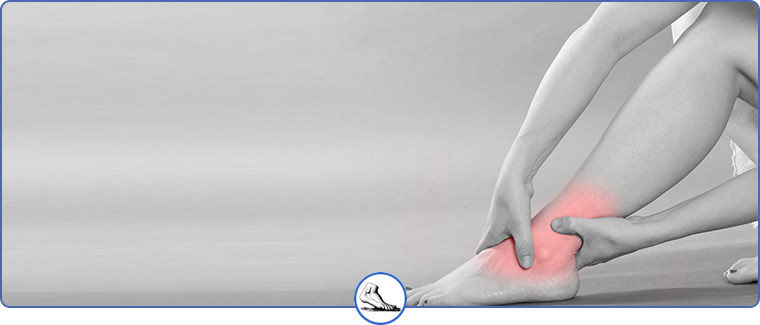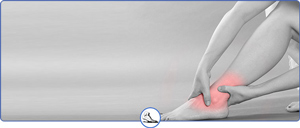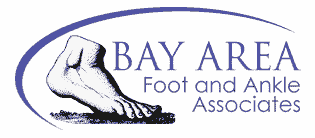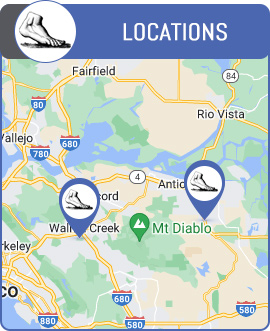Excessive Pronation Treatment in Walnut Creek, CA, and Brentwood, CA
Excessive pronation of the feet can stem from various factors that may cause the foot to roll inward excessively during walking or running. It allows you to absorb shock when your foot hits the ground. Excessive pronation causes conditions such as arthritis, stiff ankles, heel pain, shin splints, and hammer toes. If you think your foot is overly pronated or misaligned, consult Dr. John W. Scivally, DPM, and Dr. Robin K. Lie, DPM and don’t ignore it because early detection minimizes future chronic foot discomfort. For more information contact us or book an appointment online. We have convenient locations to serve you in Walnut Creek, CA and Brentwood, CA.


Table of Contents:
What is excessive pronation?
What causes excessive pronation of the feet?
What are the symptoms of excessive pronation?
How is excessive pronation diagnosed by your podiatrists?
The way your foot makes contact with the ground while walking or running can have a significant impact on your health, particularly if you engage in sports activities like running. Excessive pronation is a specific foot movement that can occur during stepping. It refers to the inward rolling of the foot as you move. Pronation is associated with the flattening of your feet, and when you overpronate, your feet overly flatten.
This flattening and stretching of the arch can lead to strain on your muscles, tendons, and ligaments. Consequently, excessive pronation may increase the risk of developing certain injuries. Monitoring and addressing excessive pronation is essential, especially for individuals engaged in physical activities, to mitigate potential health issues and maintain optimal foot function.
Excessive pronation of the feet can stem from various factors that may cause the foot to roll inward excessively during walking or running. Identifying the underlying causes is crucial in correcting the issue.
People who have significantly flat feet or a collapsed arch often encounter overpronation. Flat feet can develop due to various factors, including genetics, extended periods of standing, or wearing unsupportive footwear like flip-flops or slippers.
In some individuals, overpronation may be a genetic trait that is present from childhood. However, it is essential to note that a certain degree of overpronation is considered normal in very young children until the arch of the foot fully develops, typically around age six.
Strain, overuse, and wear on the muscles, ligaments, and plantar fascia (the arch of the foot) can lead to excessive flattening and inward rolling of the foot as it strikes the ground, resulting in overpronation. A damaged arch, often caused by an overworked plantar fascia, can impede proper foot function and effective impact distribution.
Prolonged standing or walking in high heels can subject the arch and surrounding ligaments and muscles to significant strain and pressure, potentially leading to overpronation. Ill-fitting or unsupportive shoes, as well as worn-out soles or shoes that slide while walking, can also contribute to the excessive flattening and inward rolling of the arch. Correcting or addressing these causative factors can be essential in managing excessive pronation and promoting better foot alignment and function.
Excessive pronation, during walking or running, can be identified by several noticeable symptoms. Those who experience excessive pronation may encounter pain in the arch of the foot and the heel. A lack of stability in the feet during running can lead to a higher risk of stumbling or falling.
Another symptom of excessive pronation is the outward turning of the foot at the ankle during movement, effectively causing the individual to walk along the inner portion of the foot. This strain and pressure along the instep can result in heel and foot pain, as well as discomfort in the knees, back, and hips.
A helpful clue to determine if excessive pronation is present can be found in the wear pattern of your favorite pair of sneakers. Severe excessive pronation will exhibit significant wear along the inner edge of the shoe’s sole, near both the toe box and heel. In cases of moderate excessive pronation, wear will be noticeable near the inner edge of the shoe’s sole at the toe box and along the outer edge of the sole at the heel.
Excessive pronation can be diagnosed by various healthcare professionals, including podiatrists. To determine if you have excessive pronation, a podiatrist will typically conduct an observational and gait assessment, which involves observing how you walk.
During this assessment, the podiatrist will carefully analyze the movement of your foot and ankle in coordination with your knees, hips, pelvis, and lower back. By examining your walking pattern and foot mechanics, Dr. John W. Scivally, DPM, and Dr. Robin K. Lie, DPM can identify any abnormalities or excessive pronation, which may be contributing to foot and lower limb issues. This thorough evaluation allows the podiatrist to accurately diagnose excessive pronation and develop an appropriate treatment plan to address any related concerns and promote better foot health.
Excessive pronation treatment is available at Bay Area Foot and Ankle Associates. For more information contact us or book an appointment online. We have convenient locations to serve you in Walnut Creek, CA and Brentwood, CA. We serve patients from Walnut Creek CA, Brentwood CA, Pittsburg CA, Antioch CA, Alamo CA, Danville CA, Oakley CA, Concord CA, Pleasant Hill CA, and surrounding areas.

Additional Services You May Need
▸Custom Foot Orthotics
▸Ingrown Toenail Specialist
▸Traditional Podiatry Care
▸Foot and Ankle Surgery Clinic
▸Bunion Doctor
▸Corns and Calluses
▸Foot Arthritis and Joint
▸Warts
▸Video Gait Analysis
▸Athletic Taping
▸Pediatric Foot Specialist
▸Gait Abnormalities
▸Foot Dermatologist
▸Foot Deformities
▸Chronic Foot Injury
▸Diabetic Foot Specialist
▸Acute Foot Injuries
▸Podiatric Sports Services
▸Plantar Fasciitis Specialists


